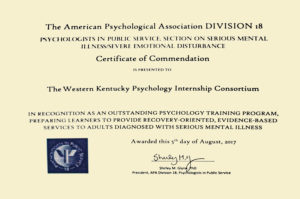According to the National Sleep Foundation, more than 65 percent of Americans don’t get enough sleep regularly (Ott, 2003) and many factors contribute to sleep deprivation for example bathroom trips, sleep schedules, temperature, noise, and technological devices.
Temperature
Rohles and Munson (1981) in their study examined EEG’s and skin temperature measurements from six men and six women while they slept in environments with temperatures of 10·0°C, 21·1°C, and 32·2°C. EEG recordings showed that the proportion of time in each sleep stage was not affected by the temperature of the sleep environment. However, after participants awoke and completed a questionnaire, women did not sleep as well at 10·0°C as at the other temperatures, when sleeping in conventional clothing and bedding.
Noise
Muzet (2007) found sleep disturbance is largely impacted by noise in the environment. “The input to the auditory area of the brain through the auditory pathways is prolonged by inputs reaching both the brain cortical area and the descending pathways of the autonomic functions. Therefore, the sleeping body still responds to stimuli coming from the environment, although the noise sensitivity of the sleeper depends on several factors (e.g. type of noise, noise frequency, one’s age, sex, personality characteristics and self-estimated sensitivity to noise).”
Technology
With the advancements of technology, Gradisar, Wolfson, Harvey, Hale, Rosenberg, and Czeisler, (2013), found in their sample, 95 percent of participants used some type of electronics at least a few nights a week within the hour before bed, like a television, computer, video game or cell phone. “Unfortunately cell phones and computers, which make our lives more productive and enjoyable, may also be abused to the point that they contribute to getting less sleep at night leaving millions of Americans functioning poorly the next day,” said, Russell Rosenberg, PhD, Vice Chairman of the National Sleep Foundation. Czeisle and Shanahan (2016) stated in a “Systematic review and meta-analysis by Carter and colleagues in this issue of JAMA Pediatrics found that the mere presence of a mobile device in the sleeping environment at bedtime, and certainly its use, increased the risk of inadequate sleep quantity, poor sleep quality, and daytime sleepiness the next day in children 6 to 19 years old.” Gradisar, et al., (2013) found 13-18 year olds are the sleepiest of all age groups, then Generation Z’ers and generation Y’ers report more sleepiness than generation X’ers and Baby Boomers. Results revealed that Baby Boomers, due to the difference in technology use, have less sleep disturbance.
Sleep Advice
Gradisar, Wolfson, Harvey, Hale, Rosenberg, and Czeisler, (2013) stated, “If you are having problems sleeping, the National Sleep Foundation recommends the following to improve your sleep:
- Create and stick to a sleep schedule.
- Expose yourself to bright light in the morning and prevent it at night.
- Exercise frequently.
- Create a comforting bedtime routine.
- Create a cool, comfortable, distraction and stress free sleep environment
- Maintain a “worry book” next to your bed to write down your thoughts.
- Avoid caffeinated beverages, alcohol, chocolate, large meals and tobacco at night and before bed.
- Unless you work the night shift, No late-afternoon or evening naps.”
References
Czeisler, C. A., & Shanahan, T. L. (2016). Problems Associated With Use of Mobile Devices in the Sleep Environment–Streaming Instead of Dreaming. JAMA Pediatrics, 170(12), 1146-1147. doi:10.1001/jamapediatrics.2016.2986
Gradisar, M., Wolfson, A. R., Harvey, A. G., Hale, L., Rosenberg, R., & Czeisler, C. A. (2013). The Sleep and Technology Use of Americans: Findings from the National Sleep Foundation’s 2011 Sleep in America Poll. Journal Of Clinical Sleep Medicine, 9(12), 1291-1299. doi:10.5664/jcsm.3272
Muzet, A. (2007). Environmental noise, sleep and health. Sleep Medicine Reviews, 11(2), 135-142. doi:10.1016/j.smrv.2006.09.001
Ott, C. (2003). Stay Young with a Good Night’s Sleep. Natural Health, 33(2), 68.
Rohles, F. H., & Munson, D. M. (1981). Sleep and the sleep environment temperature. Journal Of Environmental Psychology, 1(3), 207-214. doi:10.1016/S0272-4944(81)80039-4
Katy Roth, M.A., CRC
WKPIC Doctoral Intern

